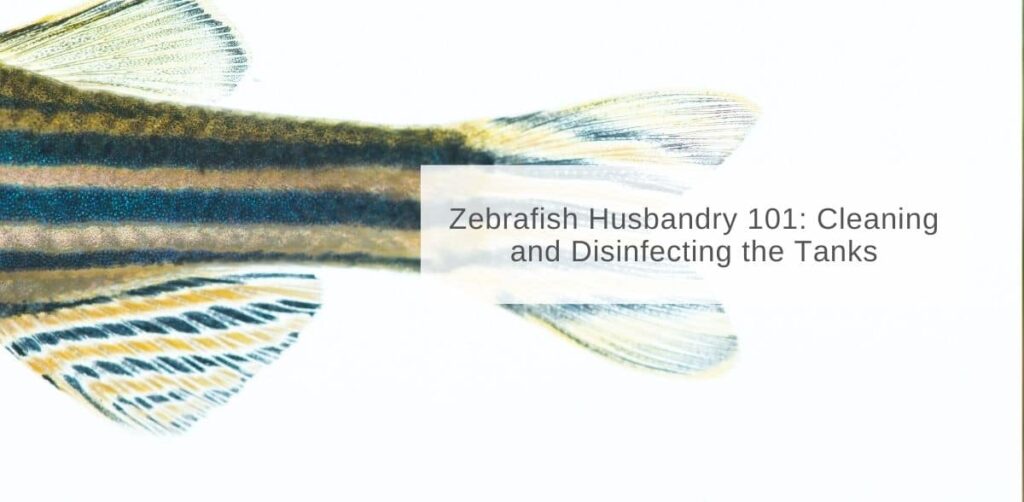An important, but time-consuming, aspect of zebrafish maintenance and husbandry is the proper cleaning and disinfecting of lab equipment. Tanks should be cleaned every 5-6 weeks – this video walks you through the handling of zebrafish during tank to tank transfers, and the cleaning of the old tank.
Interested in learning more? You can view the rest of our Zebrafish Husbandry 101 series here, and learn more about our zebrafish services here.
Step-by-Step Guide to Cleaning and Disinfecting Zebrafish Husbandry Tank
At our facility, tanks get cleaned about once every 5-6 weeks. Here, we’ll go through the steps that we take when cleaning a single tank.
1. Setting Up a New Tank
First, we have to get our supplies ready to set up a new tank. We fill up a clean tank using fish water from the rack. We make sure to transfer all of the important labels from the old tank to the new tank.
2. Transferring the Zebrafish
And then we can start transferring the fish over. When handling the fish, it’s important to move slowly and carefully as to not scare or injure any of the fish. Be sure to replace the lid on the tanks after you’re done handling the fish, because they will try to jump out and we don’t want to lose any fish. Now that we’ve transferred all of the fish into the new clean tank, we can put this clean tank back up on the rack and start the water flow again.
3. Cleaning and Disinfecting
And we will move on to bleaching and cleaning the old tank. We start by cleaning any excess debris off of the dishes using a soft sponge or cloth. We can use tap water at this stage and we will put them into the bleach. We make sure that all of the dishes are completely covered by the 10% bleach solution, and we will leave them in the solution for 30 minutes to disinfect them. After the bleaching period is done, we’ll, remove the dishes and rinse them under tap water. Bleach is very harmful to fish, so to make sure any leftover bleach is inert, we place the dishes into a sodium diosulphate bath for a few moments.
4. Rinsing and Drying
We will do one final rinse and tap water and place the dishes onto a drying rack to dry. If the dishes need to be used immediately, then they need to be rinsed with RO water to make sure that there is no chlorine left on the dishes from the tap water. So as you can see, this is a fairly time consuming and laborious process, we hope to be getting one of these large cage washing systems soon enough.

